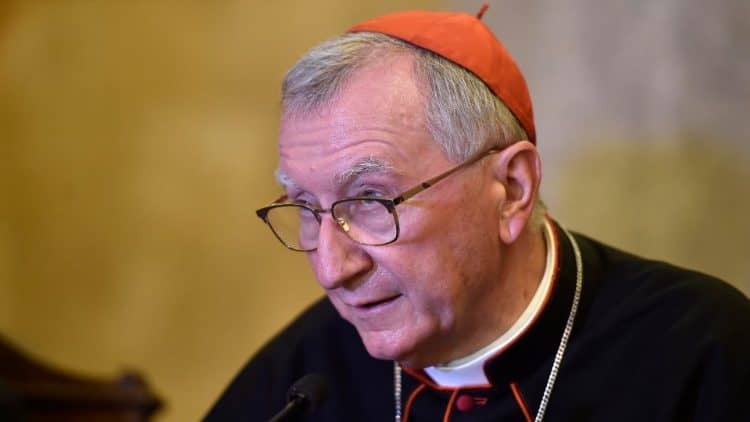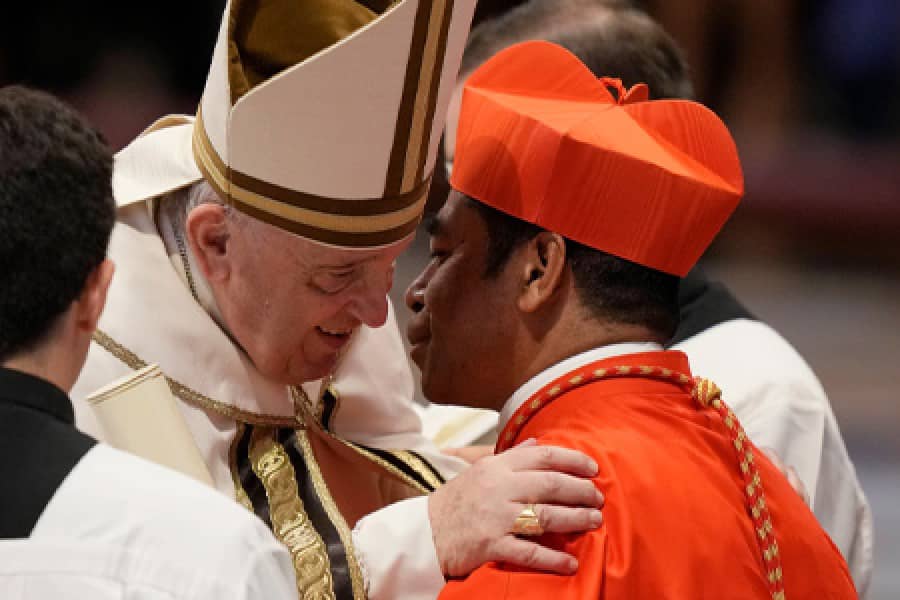FATIMA, Portugal – Speaking at the famed shrine of Our Lady of Fatima on the 100th anniversary of the apparitions that took place here a century ago, featuring secrets and revelations from Mary, Pope Francis warned hundreds of thousands of faithful not to live a life that profanes God, because doing so leads to Hell.
“Our Lady foretold, and warned us about, a way of life that is godless and indeed profanes God in his creatures,” Francis said. “Such a life – frequently proposed and imposed – risks leading to Hell.”
His words came during the homily of the Mass he celebrated on Saturday, celebrating the anniversary of the first of six apparitions of Our Lady of the Rosary to three young illiterate shepherds in Portugal.
During the Mass, which took place during the second and final day of his visit to Portugal, the pontiff declared siblings Francisco and Jacinta Marto, the youngest of the three seers, as saints.
The two become the youngest, non-martyred canonized saints of the Catholic Church.
“God effects a general mobilization against the indifference that chills the heart and worsens our myopia,” the pope said, in a homily he read in Portuguese. “We do not want a stillborn hope! Life can survive only because of the generosity of other lives.”
As he had done the day before, the Argentine pontiff put himself at the center of the message of the apparitions, this time quoting from the memoirs of Sister Lucia do Santos, the eldest of the seers who lived until 2005, and died aged 97.
In the passage quoted, Lucia was in turn quoting Jacinta, who had received a vision the rest had not: “Do you not see all those streets, all those paths and fields full of people crying out for food, yet have nothing to eat? And the Holy Father in a church, praying before the Immaculate Heart of Mary? And all those people praying with him?”
“Thank you, brothers and sisters, for being here with me!” the pope said, before adding that he couldn’t not come to Fatima to venerate the Virgin, and to “entrust to her all her sons and daughters.”
Francis also shared a moment with hundreds of sick people, whom he addressed after the Mass.
“Dear pilgrims, we have before us Jesus hidden yet present in the Eucharist, just as we have Jesus hidden yet present in the wounds of our brothers and sisters who are sick and suffering,” he told them.
“On the altar, we worship the flesh of Jesus; in these our brothers and sisters, we encounter the wounds of Jesus,” Francis added.
He urged the sick to live their lives as a gift, and, like the shepherd children, to tell the Virgin that they want to offer themselves to God.

“Don’t think of yourselves simply as the recipients of charitable solidarity, but feel that you share fully in the Church’s life and mission,” he said. “Do not be ashamed of being a precious treasure of the Church.”
It was not by chance that Francis spoke about Hell during the Mass. Though he’s done it many times before, “eternal damnation” is part of the famed secret of Fatima. During the third of the six visions the seers had, the Virgin showed them “a sea of fire.”
“Plunged in this fire were demons and souls in human form, like transparent burning embers, all blackened or burnished bronze, floating about in the conflagration … amid shrieks and groans of pain and despair, which horrified us and made us tremble with fear,” Lucia wrote in her memoirs.
An estimated half-million people – the full capacity of the esplanade connecting the new shrine of Fatima with the old one – took place in the celebration. The altar, a permanent feature of the facilities, had the impressive old shrine as a frame.
Flags from Portugal, Venezuela, France, Argentina, Ukraine, Poland, and Italy were among the easiest to spot, but pilgrims flocked from the four corners of the world. Thousands arrived after walking hundreds of miles from Lisbon, the Portuguese capital.
Svetlana, for instance, came to Fatima from Ukraine, with a group of 30 people, led by their parish’s priest.
“We’ve come as guests of our Lady. First of all, to thank her for the many graces she’s given us. But also to pray for our families, and to ask for peace in Ukraine and the world, as Mary has asked us to do,” she told Crux.

This seemed the general sentiment on Saturday. Some prayed for peace in their own country, others for religious freedom. A group of pilgrims from China, for instance, said that among the things they wanted the most was religious freedom in their country, to be able to live their faith in the open, with no fear of retaliation from the government.
Before the Mass, Pope Francis visited the tombs of the three shepherds of Fatima, brothers Francisco and Jacinta, and their cousin Lucia. Her canonization process was opened in 2008, with Pope Benedict XVI lifting the five-year waiting period often required for this.
The tombs are located in the new shrine of Fatima, properly called Basilica of the Most Holy Trinity, built between 2004 and 2007. Here, the pontiff prayed for a few minutes in front of the resting place of each saint.

















